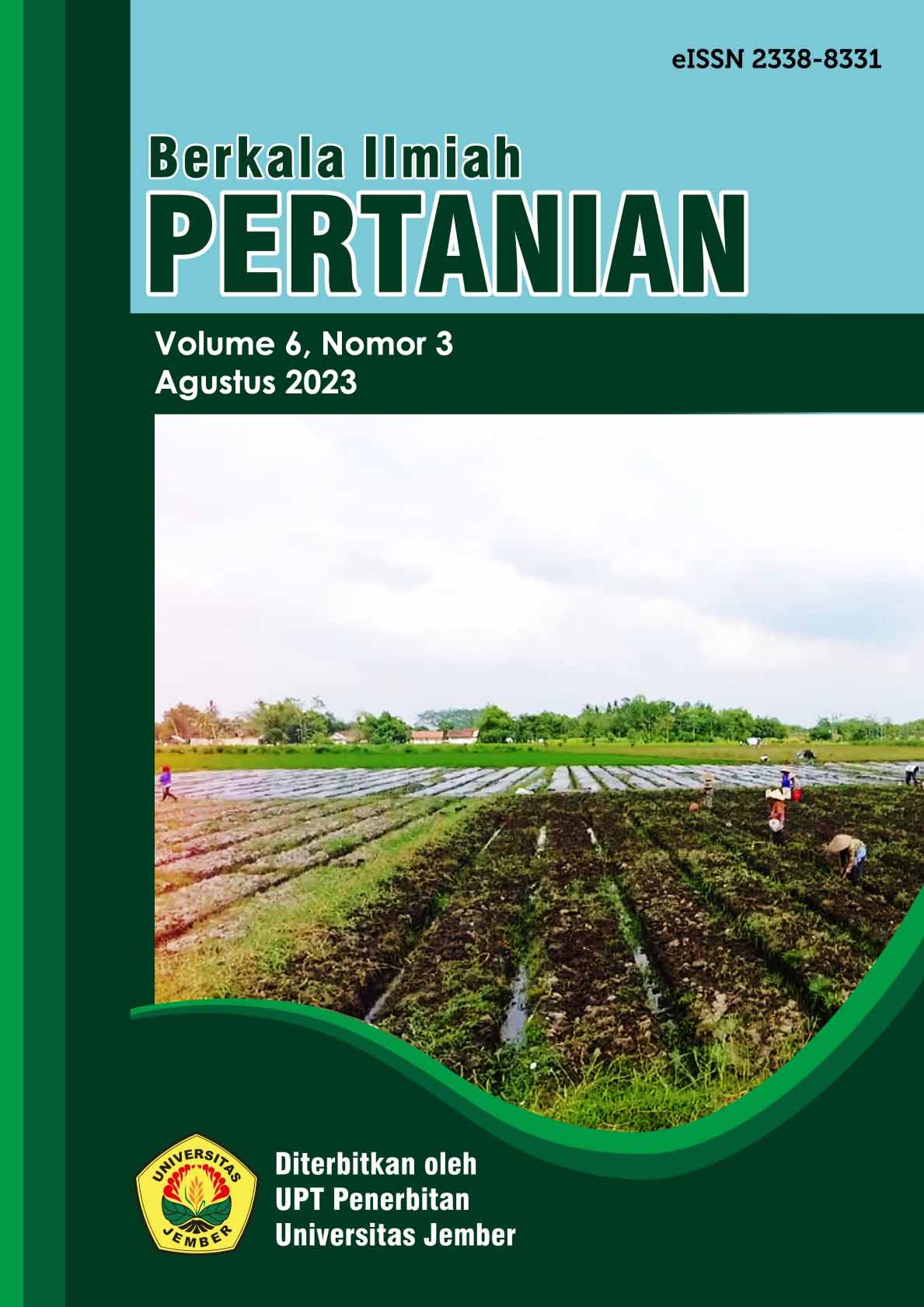The Pengaruh Pemberian Pupuk Bokashi Feses Ayam Broiler Dan NPK Terhadap Pertumbuhan Dan Hasil Tanaman Sawi Caisim (Brassica Juncea L.)
DOI:
https://doi.org/10.19184/bip.v6i3.39187Abstract
Mustard plant (Brassica juncea L.) as one of the horticultural plant species from the Brassicaceae family which has great potential to be cultivated in Indonesia. The productivity of mustard greens has decreased due to several factors, one of which is the insufficient nutrients needed by plants during the vegetative and generative stages of the plant. In addition, the factors that affect the cultivation of mustard plants are declining soil quality, uncertain climate change, and attacks by plant-disturbing organisms (OPT). With this problem, it is necessary to add nutrients to the soil, the added nutrients are organic fertilizer bokashi broiler chicken feces and inorganic fertilizer NPK. The purpose of this study was to determine the effect of the interaction between broiler feces bokashi fertilizer and NPK fertilizer on the growth and yield of caisim mustard plants. The research method used a completely randomized design (CRD) which consisted of 2 factors with 3 replications. The first factor of bokashi fertilizer consists of 3 levels, namely B1: 25 grams/polybag; B2: 30grams/poly bag; B3 : 35 gram/poly bag. The second factor is NPK fertilizer which consists of 3 levels, namely N1: 0.63 gram/polybag; N2: 0.47 gram/poly bag; N3: 0.31 gram/poly bag. The data obtained was analyzed using Analysis of Variance (ANOVA), and if it was significantly different, it would be further tested by Duncan's Multiple Range Test or Duncan's Multiple Range Test (DMRT) with a 95% confidence level. The results showed (1) the interaction of broiler feces bokashi fertilizer and NPK fertilizer showed a significant difference in plant height and plant fresh weight variables and other variables showed no significant different effect. (2) Broiler faeces bokashi single fertilizer treatment gave significantly different results on root length and plant fresh weight variables with the best dose being B3 : 35 gram. (3) the single fertilizer treatment gave highly significant different results on the number of leaves variable and not significantly different on the growth rate variable and chlorophyll content variable with the best dosage being N3: 031 gram.
Downloads
Downloads
Published
Issue
Section
License
Authors who publish with this journal agree to the following terms:
1.Authors retain copyright and grant the journal right of first publication with the work simultaneously licensed under a Creative Commons Attribution-NonCommercial 4.0 International License that allows others to share the work with an acknowledgement of the work's authorship and initial publication in this journal.
2.Authors are able to enter into separate, additional contractual arrangements for the non-exclusive distribution of the journal's published version of the work (e.g., post it to an institutional repository or publish it in a book), with an acknowledgement of its initial publication in this journal.
3.Authors are permitted and encouraged to post their work online (e.g., in institutional repositories or on their website) prior to and during the submission process, as it can lead to productive exchanges, as well as earlier and greater citation of published work (See The Effect of Open Access).




















